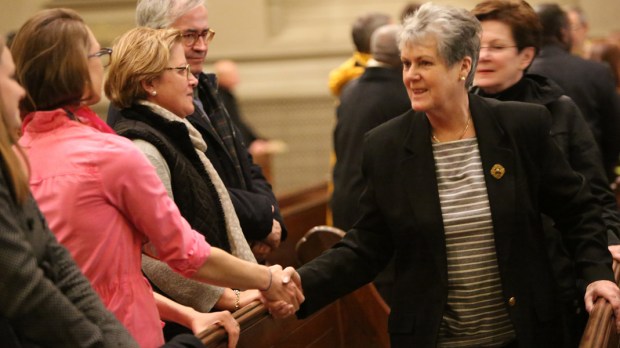Lenten Campaign 2025
This content is free of charge, as are all our articles.
Support us with a donation that is tax-deductible and enable us to continue to reach millions of readers.
While many Catholics are familiar with the sign of peace at Mass, few know the origins of this liturgical action.
The sign of peace was not created to be a casual exchange, but a profound plea for forgiveness.
St. Cyril of Jerusalem explains the spiritual meaning of this action in his Catechetical Lectures.
Then the Deacon cries aloud, “Receive ye one another; and let us kiss one another.” Think not that this kiss is of the same character with those given in public by common friends. It is not such: but this kiss blends souls one with another, and courts entire forgiveness for them. The kiss therefore is the sign that our souls are mingled together, and banish all remembrance of wrongs. For this cause Christ said, “If you are offering your gift at the altar, and there remembers that your brother has anything against him, leave there your gift upon the altar, and go your way; first be reconciled to your brother, and then come and offer your gift. The kiss therefore is reconciliation, and for this reason holy: as the blessed Paul somewhere cried, saying, Greet ye one another with a holy kiss 1 Corinthians 16:20; and Peter, with a kiss of charity 1 Peter 5:14 .
Ancient cultures had a custom of a “kiss of peace,” which was much more meaningful than the simple handshake or waving that has replaced it in the modern Church.
Furthermore, since churches were relatively small at the time, everyone knew everyone else, making this “kiss” more meaningful, as you likely held grudges against people you saw on a regular basis.
This is much different than modern-day parishes, where the congregation is constantly changing and you don’t even know the person standing next to you.
Nevertheless, the spiritual meaning behind the sign of peace remains, urging all of us to reconcile with our brothers and sisters before approaching the altar.



